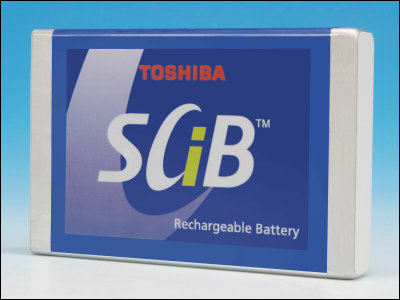Succeeded in developing "manganese hydrogen battery" that stores electric power of solar power generation and wind power generation with cheap materials

To cope with the ever-growing demand for power, the importance of batteries that temporarily store electric power as well as the peak shift of electricity attracts attention. Meanwhile, researchers at Stanford University have developed manganese hydrogen batteries to make maximum use of solar power generation and wind power generation.
A manganese - hydrogen battery with potential for grid - scale energy storage | Nature Energy
https://www.nature.com/articles/s41560-018-0147-7
New water-based battery offers large-scale energy storage | Stanford News
https://news.stanford.edu/2018/04/30/new-water-based-battery-offers-large-scale-energy-storage/
The Department of Energy (Department of Energy) in the US intends to lower the rate of thermal power generation that burns fossil fuels to emit carbon dioxide. For that purpose, although power generation and wind power generation are powerful, both have the disadvantage that there is a big wave in the amount of power generation and the power generation efficiency itself is not so high. Therefore, a storage battery (battery) that temporarily stores the generated electric power is an important key, and the Ministry of Energy says, "Electricity of at least 20 kW can be held in one hour, charging and discharging more than 5000 times is possible, 10 years Battery with a lifespan of more than ¥ 2,000 "(approx. 220,000 yen) or less based on practical application. In other words, it is required to realize a battery with a low price of 100 dollars (about 11,000 yen) per kWh.

Lithium-ion batteries used in mobile phones and others are inexpensive because they are expensive due to the use of rare metals and rare earths because they are batteries of low price and high lifetime. Therefore, attention is gaining attention on manganese hydrogen batteries using inexpensive manganese.
Dr. Way Cheng's research team at Stanford University has reported that manganese ions and manganese dioxideCathodeManganese Hydrogen Battery "which carries electrons by circulating between the two batteries. This manganese hydrogen batteryanodeSince water and hydrogen come and go, the developer expresses it is a "battery derived from water" and "type that stores energy in hydrogen" type. Manganese hydrogen battery is a rechargeable secondary battery, of course. Furthermore, manganese sulfate which can be mass-produced industrially at a low cost is industrially used as a battery solution and "for practical use, the cost required to illuminate a 100 watt bulb for 12 hours is 1 penny (about 1 yen)" Professor Lee Chui guesses.

The developed manganese hydrogen battery is capable of supplying 20 mWh of power with a size of 3 inches (about 7.6 centimeters), but researchers believe that the researchers are convinced that durability capable of charging and discharging more than 10,000 times about. Professor Chui seems to believe that we can meet the goal of the Ministry of Energy by making the technology developed this time to the electric storage on the scale of practical use level. The research team is planning to improve design and material selection work to realize a manganese hydrogen battery with lower cost, longer life and practicality in the future.
Related Posts:







